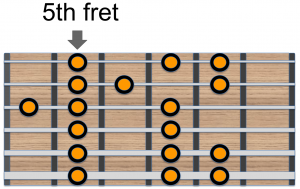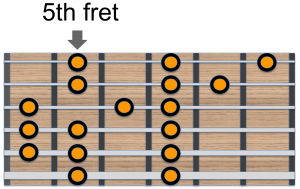Scalar interchange is a very useful skill especially when it comes to the Blues where the chords are all dominant 7th chords. Essentially, we can see the chords as being the V7 (i.e. fifth) chords of 3 different keys. Therefore, if we know how to change between the major scales of these keys we will be able to hit the relevant chord tones. Let us take the standard 12 bar blues in D as shown below right.
The chords are D7, G7 and A7. Since these chords collectively are not diatonic to a single key, let us treat them as being the fifth chord of their respective keys as suggested above.
The D7 is the fifth chord in the key of G major, while the G7 and A7 are the fifth chords of the C major and D major keys respectively.

This means over the individual D7 we will need to solo in the key of G major but when the chords change to G7 and A7, we will need to solo in the key of C major and D major respectively.
In other words, a simple 12 bar blues actually changes key 3 times.
Changing in Position
Most guitarists will change the position of a scale to a different fret when the chord changes. However, this approach of ‘changing position’ tends to confuse the learner because of the position shifts to different locations on the fretboard. Perhaps a better way to learn is to change the scale pattern at the same location of the fretboard. I call this “Changing in Position”. In order to do this, we need to have mastered the 5 basic major-scale fingering patterns.
In example 1 below, we will demonstrate changing the scale between the keys of G major, C major and D major between the 5th and 8th frets. The 3 scale fingerings are shown below.

G major scale @5th fret.

C major scale @5th fret

